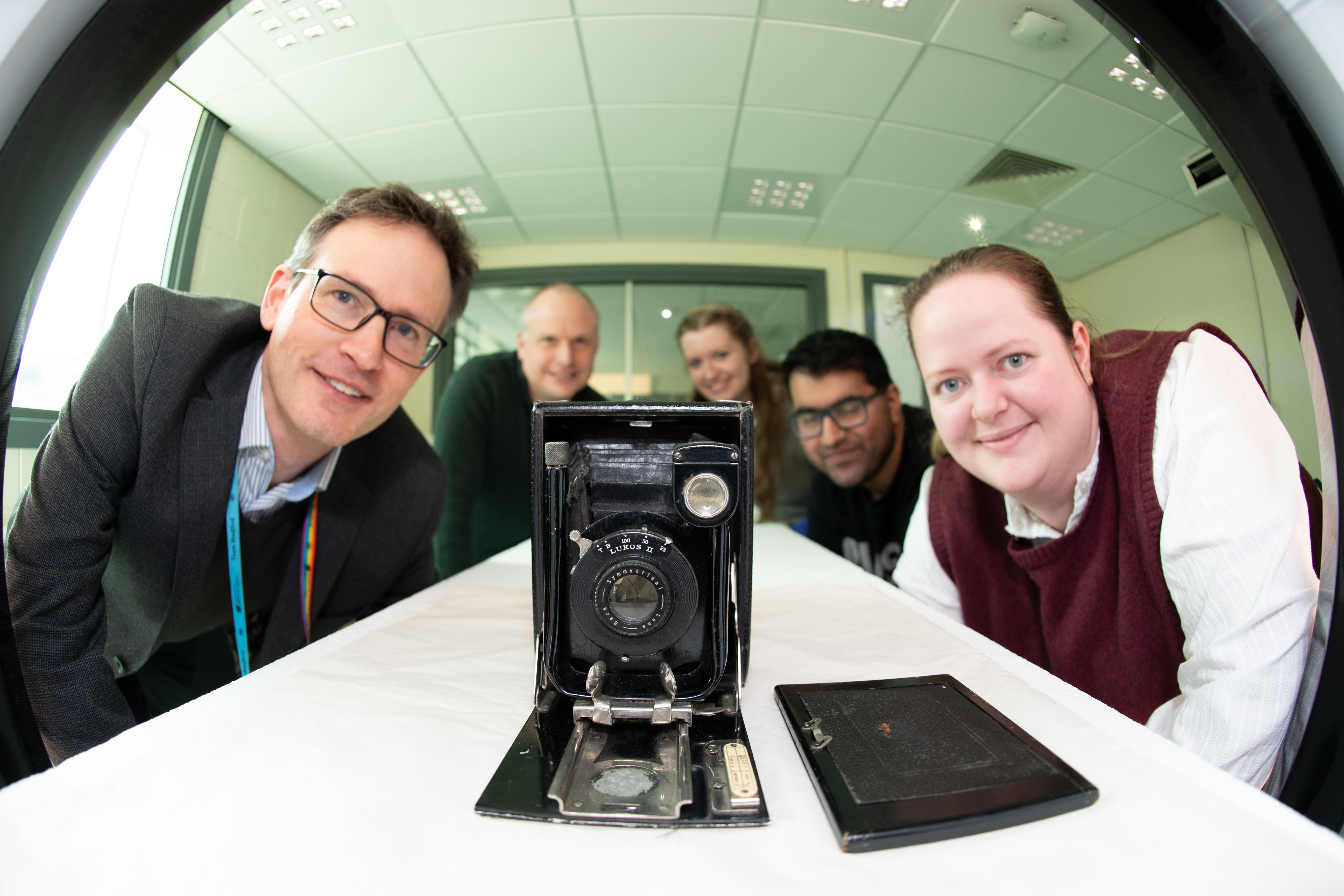Cottingley Fairies cameras first to undergo state-of-the-art scanning
The five photographs taken by two young cousins in West Yorkshire caused a sensation more than 100 years ago.

Your support helps us to tell the story
From reproductive rights to climate change to Big Tech, The Independent is on the ground when the story is developing. Whether it's investigating the financials of Elon Musk's pro-Trump PAC or producing our latest documentary, 'The A Word', which shines a light on the American women fighting for reproductive rights, we know how important it is to parse out the facts from the messaging.
At such a critical moment in US history, we need reporters on the ground. Your donation allows us to keep sending journalists to speak to both sides of the story.
The Independent is trusted by Americans across the entire political spectrum. And unlike many other quality news outlets, we choose not to lock Americans out of our reporting and analysis with paywalls. We believe quality journalism should be available to everyone, paid for by those who can afford it.
Your support makes all the difference.Cameras used to create images of the famous Cottingley Fairies are among the first objects to be internally analysed by state-of-the-art scanning technology.
The cameras were used by young cousins Elsie Wright and Frances Griffiths between 1917 and 1920 to take five images which shocked and intrigued the world for decades.
The pictures of the girls with the fairies at the bottom of their aunt’s garden in Cottingley and the nearby Cottingley Beck, in West Yorkshire, caused a sensation.
Towards the end of their lives, in the 1980s, the two women admitted faking the first four photographs, although Ms Griffiths always maintained that the fifth and final picture was genuine.
The cameras are part of the permanent collection of the National Science and Media Museum, in Bradford, and have now been put through the latest CT scanners recently acquired by the University of Bradford’s School of Archaeological and Forensic Sciences.
The two scanners – a MetroTom 1500 micro CT and a NewTom CBCT (Cone Beam CT) – are able to image detail down to a resolution of seven microns – about the width of a strand of spider silk.
Of course, we didn't find any fairies but I think we did find a little bit of magic
They also have the ability to see inside physical objects, negating the need for intrusive inspections.
One of the cameras is a Quarter-plate “Midg” camera manufactured by W Butcher & Sons, in London, which was used by the cousins, who were 16 and nine at the time, to make the first two Cottingley Fairies photographs in 1917.
A second camera, a Quarter-plate “Cameo” was given to the girls by Sir Arthur Conan Doyle and used to create fairy pictures between 1918 and 1920.
Professor Andrew Wilson, of the University of Bradford, said: “Of course, we didn’t find any fairies but I think we did find a little bit of magic – in that these scanners show how we can now look inside objects without disturbing them and see a level of detail that is unsurpassed.”
He said: “This is one of the first iconic objects from the National Collection to go into our micro CT and cone beam CT scanners.
“It’s highly significant because of its back story and it also demonstrates how we’re able to use the latest imaging technology to look inside everyday objects, to see things that would otherwise be hidden. These new scans allow us to see the hidden workings of the cameras and the magic that sits behind them.”
Ruth Quinn, curator of photography and photographic processes at the National Science and Media Museum, said: “The Cottingley Fairies cameras show how ordinary people can achieve extraordinary things when coupled with skill and playful creativity.
“Through scanning these objects, we can show the inner workings of how analogue photography works – and the materials which go into making a camera.
“It’s really exciting to be able to see new details inside our objects using the cutting-edge facilities next door to us at the University of Bradford.”